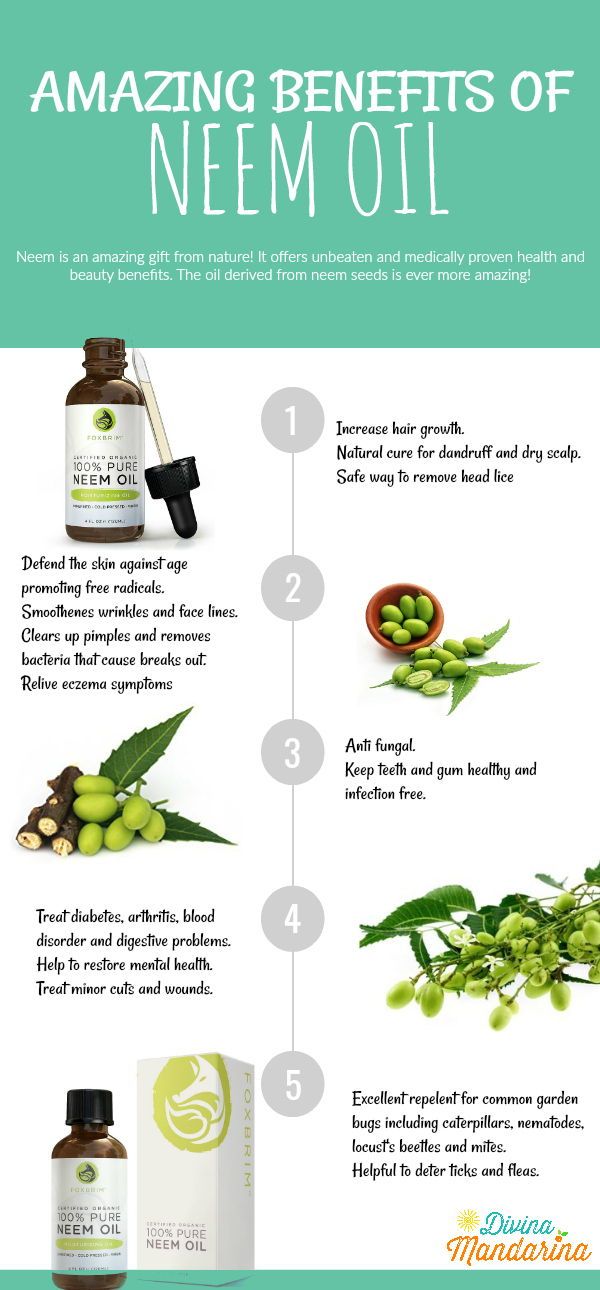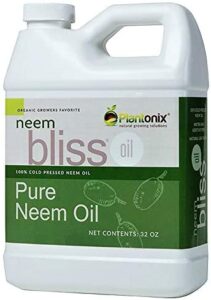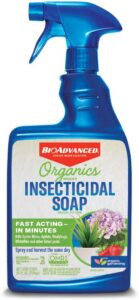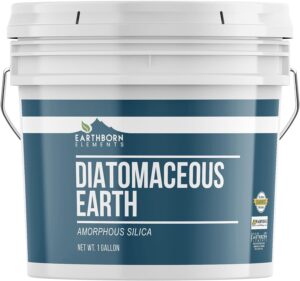garden
Neem Oil Soil Drench Recipe:
Pest Free Garden
Do you have a garden that is being plagued by insect pests? Are you looking for a natural insecticide to get rid of them without using harsh chemicals? If so, then neem oil products may be the answer. Neem oil is a naturally occurring pesticide that comes from the neem tree (not a combination of harmful chemicals). It is effective in getting rid of a wide variety of pests, and it is safe for use around people, pets, and plants.
What is neem?
Neem is a tropical evergreen tree that is native to India, known as the Azadirachta Indica Tree. The neem tree can grow up to 20 meters in height, and it has wide, spreading branches. The leaves of the neem tree are long and narrow, and they are arranged in pairs along the stem. The flowers of the neem tree are small and white, and they grow in clusters. The fruit of the neem tree is a small, black seed that is enclosed in a hard shell.
- neem oil concentrate or neem oil extract
- pure neem oil
- Cold-pressed neem oil
- hydrophobic neem oil
- neem seed meal
Different Ways to Use Neem Oil
Soil Soak
Soil-dwelling insects can be tricky, mostly because they can not be spotted easily. Running your hand over your dirt to slightly disturb it can help those insect pests buried in the soil surface. This is when a neem oil soil drench can be very helpful. Making a soil soak is very easy and can be used as a preventative way to help keep bugs and insects out of your soil. By using a neem oil soil soak, the neem is “eatten” by your plants and becomes part of their plant structure. Anything that then feeds on those plants will be exposed to neem. This is very similar to how we give our dogs tick medicine orally. They eat the tick medicine and when a tick bites them they are exposed to this medicine that in turn kills off the ticks, but is not harmful to the dog.
1. Neem Oil
2. Liquid Dish Soap
3. Water: Used to dilute the essential oil and soap mixture
4. Jug

Neem Oil Soil Soak Recipe:
- Measure out your Liquids & Mix Together
In a large watering can or jug, combine 3-6 tablespoons of neem oil with 4 teaspoons of dish soap. Add a gallon of water. - Stir
Stir until all of your ingredients have combined together. - Apply
Pour this organic pesticide onto your soil. Make sure your soil gets wet, saturating the soil, but is not waterlogged. Your goal is to hit the root zone.
Repeat this every 2-4 weeks to help prevent soil issues.
Insecticidal Soap to be used as Foliar Spray
Insecticidal Soap is exactly what it sounds like: neem oil mixed with dish soap. This is very similar to the neem oil soil drench recipe, except it is created to be a spray and applied to foliage instead of the soil. Combining these two ingredients creates an effective insecticidal soap that helps control a variety of garden pests. It has been said that neem oil application should not be done in direct sunlight. Especially when mixed with dish soap, this neem oil mixture can burn the plant’s surface. The best time to apply a foliar spray is during sun down. I particularly prefer sunset over sunrise because I believe I have more pests that come out at night and want to spray prior to those plant pests coming out for their night snack. Additionally, neem oil can affect sensitive plants like newly transplanted or stressed plants and cause burning to their foliage. Use sparingly and wisely.
To us a neem oil spray to deter garden pests, you will need to purchase a neem oil pesticide from your local store. You can also find these products online.
Here is how you can make and use neem oil insecticidal soap:
- Neem Oil
- Liquid Dish Soap
- Water: Used to dilute the essential oil and soap mixture
- Spray Bottle: I love this pump and spray bottle from Amazon.
Neem Oil Insecticidal Soap Recipe:
- Measure out your Liquids & Mix Together
In a large sprayer (click for my favorite sprayer), combine 3-6 tablespoons of neem oil with 4 teaspoons of dish soap. Add a gallon of water. - Shake
Secure the top on the sprayer and shake until all of your ingredients have mixed together. - Apply
Spray this organic pesticide onto your plants on a cloudy day or late evening, out of direct sunlight. Generously apply your neem oil mixture on all affected parts of your plant. Don’t be shy! Make sure to hit the top and bottom side of your plant leaves. If you see pests gathering inside tight spaces, make sure to get in there and soak them. Cabbage, kale, etc. always seem to have hidden bugs in the center of the plant where the leaves are tighter together. - Repeat
If your insect pests are severe, spray your plants every 1-2 weeks to help control. - Store for Later Use
Save any left over Neem Insecticidal Soap in a cool place and be sure to shake before using again. Once diluted, neem oil does not keep too long, so be sure to use it with a week or two of mixing with warm water.
Where to buy neem oil products
- Your local garden centers
- Online
- When buying neem oil online, I always look for an organic product that is 100% pure neem oil or labeled cold pressed neem oil. Here is a great Neem Oil on Amazon
- Grow it
- Growing neem oil is the best way to ensure it is 100% pure. You can purchase neem tree seeds here. Just keep in mind that this will take a long time before harvesting for oil. You may want to prioritize this as one of the first steps when designing and planting your garden so that it has time to establish as you are building out other areas of your space.
Use Neem for these Plant Diseases
- Fungal Diseases
- Powdery Mildew
- Leaf Tissue
- Root Rot
Pest Problems
Are insect pests taking over your garden? Hours of hard work to get your plants to sprout from seed, grow into a seedling, harden off, and transplanted out into the garden, just to find aphids, spider mites, and fungus gnats everywhere. Neem oil can be a natural pesticide to help reduce the pest problems in your garden.
First you need to be able to identify insect pests on your plants.
- Spider Mites
- Fungus Gnats
- Japanese Beetles
Neem oil is effective against a wide range of plant pests, including: aphids, whiteflies, mites, etc. It is worth nothing that I also make sure to wash my vegetables after harvesting to ensure any residual neem oil is washed away prior to eating.
Beneficial Bugs & Beneficial Insects
One downside to a neem oil drench across your plants is that it can also deter beneficial insects. Imagine it being similar to a gut cleanse. When detoxing, you wipe your gut of both good and bad bacterias. Neem oil application is very similar; it is the best way for organic gardeners to deter insect pests, but it also deters beneficial bugs at the same time. The National Pesticide Information Center reported that neem is non-toxic to birds and mammals. It is also said that it does not affect ladybugs, honey bees and other pollinators, but I am not 100% sold on this concept. When using a neem oil solution I find the best results come from when I spray in the very early morning and when there are very few insects around.
Is Neem oil insecticide safe for all plants?
Yes! Indoor plants, garden plants, outdoor plants, fruit trees, and young plants are all receptive to organic neem oil.
Active Ingredients in Neem Oil
Neem oil is an oil obtained from the little black seed that is considered the flower of a neem tree. The active ingredients within this seed contain azadirachtin, nimbin, picrin, and sialin. Okay chemist… here goes my very un-scientific explanation of these active ingredients.
- Azadirachtin
- This is a broad-spectrum insecticide, acting as a feeding deterrent and insect growth disruptor.
- Nimbin
- Nimbin is an anti-inflammatory, antipyretic, fungicidal and is responsible for most of the activities of neem oil. Nimbin is the main active ingredient in neem oil.
- Picrin
- Picrin is a flushing agent. It flushes dyes from stains safely It is found in a lot of cleaning products.
- Sialin
- Sialin is a transporter or carrier agent that helps the above agents travel. My understanding is that it is essential responsible for creating an environment or “bubble” that the above ingredients travel inside of in order to get to where they are going. It is the house to the ingredients above.
When to Use Neem Oil
Preventative Measure
- Don’t wait to see fungal infections or an insect infestation! Spray neem oil as a preventative measure. You may notice over time that certain plants within your garden are more susceptible to pest problems. Instead of waiting for the little bugs to attack, get ahead of them by lighting spraying those plants every few weeks as a precautionary measure.
Existing Infestations
- Neem oil works great when you can visibly see an infestation on an entire plant. According to The Gardener’s Guide To Common-Sense Pest Control, it works well against potato beetles, corn beetles, whitefly, cucumber beetle, corn earworm, flea beetles and cabbage loopers. Neem products are also great to use against fungus gnats, thrips, mealybugs and Japanese beetles.
Okay, so let’s elaborate on a few of these topics pertaining to starting seeds indoors that we mentioned above and some additional topics like: stratification, grow lights, and some products we always have on hand when we start seeds indoors.
Is neem oil safe if I have pets?
Yes, neem oil is safe to use around pets. However, you should avoid letting your pets ingest the oil. If you are using neem oil on your plants, be sure to keep them out of reach of your pets.
Neem Oil, Soaps, Diatomaceous Earth and More
We love using a variety of organic methods (except a chemical compound) to help with our organic pest control. When faced with an insect infestation, don’t panic. Turn to some of these simple solutions.
love this article on neem oil soil soak?



